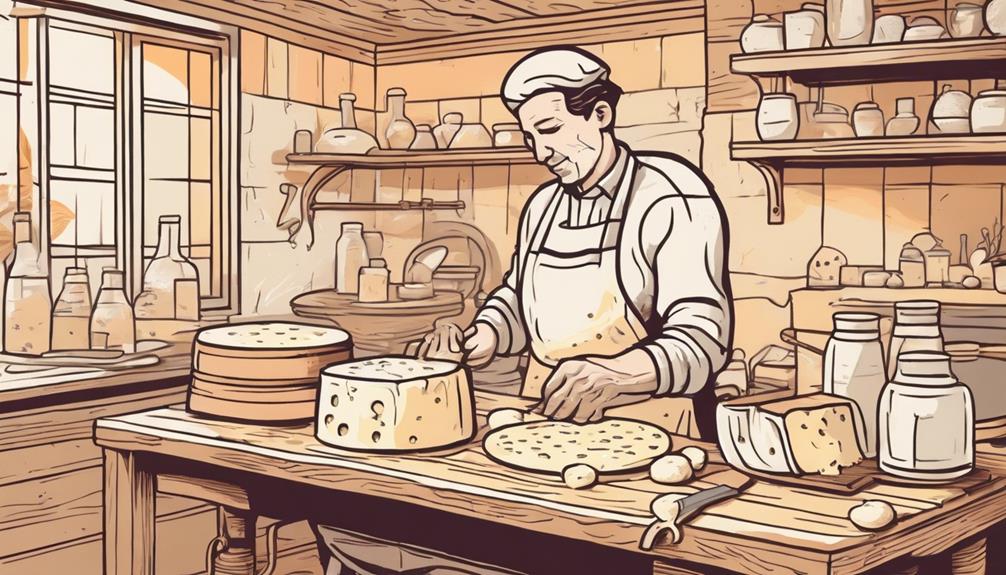How To Become More Self-Sufficient Without Starting a Full-Blown Farm…
Want to start preserving your harvest, making your own soap, or building a backyard root cellar — but not sure where to begin? “Homesteading Advice” gives you instant lifetime access to 35+ practical homesteading books on food preservation, veggie gardening, DIY natural cleaning products (save over $250 per year with this skill alone), brewing, off-grid energy, and a whole lot more…
Click Here To Check It Out Now!
“I’ve started making cheese at home, and I’m having trouble managing the moisture content in my curds. I notice my cheese sometimes turns out too dry or too moist, and I can’t figure out how to get the consistency just right. Any detailed advice on how to control curd moisture? Maybe tips for different stages of the cheese-making process to make sure my curds are just right? Thanks a bunch!” Thanks, Rebecca, Melbourne, Australia.
How Do You Manage Curd Moisture Content?
Hey Rebecca! First off, great to hear that you’re diving into the world of cheese-making. Managing curd moisture content is a bit of an art, but with some attention to detail and a few key techniques, you’ll be able to get it just right. Let’s break it down step-by-step.
The Milk Stage
The type of milk you start with can influence moisture content. Whole milk with higher fat content generally produces a creamier and moister curd. Non-homogenized milk can also lead to better curd formation.
- Fat Content: Higher fat content retains more moisture. If you’re using low-fat milk, consider blending it with cream.
- Non-Homogenized Milk: This type of milk forms a firmer curd structure, trapping moisture more effectively.
The Heating Stage
Temperature plays a huge role in curd moisture. Low and slow is often the key, but it depends on what type of cheese you’re aiming to create.
- Heating Gradually: Gradual heating allows the curds to form uniformly, reducing the risk of ending up too dry or too wet.
- Target Temperature: For soft cheeses, keep it lower (around 86°F/30°C). For harder cheeses, you might go up to 102°F/39°C.
Curd Cutting
The size of the curd cut significantly impacts moisture content. Smaller curds release more whey, resulting in a drier cheese.
- Small Cuts: For a drier cheese like Parmesan, cut the curds into rice-sized pieces.
- Larger Cuts: For moister cheeses such as Brie, keep the cuts larger, around 1-inch cubes.
Stirring the Curds
Stirring helps expel whey, controlling the final moisture content. The frequency and gentleness can vary depending on the desired cheese texture.
- Frequent Stirring: More stirring for cheeses like Cheddar to ensure reduced moisture.
- Gentle Stirring: Gentle and minimal stirring for softer cheeses to maintain higher moisture.
Cooking the Curds
The cooking phase helps in releasing whey and firming up the curds. Higher temperatures and longer cooking times result in drier curds.
- Higher Temperatures: For drier cheese, gently raise the temperature up to 130°F/55°C.
- Longer Cooking Time: Prolonged cooking at lower temperatures for a firmer texture without over-drying.
Draining the Curds
After cooking, draining the curds is crucial. The method you use to drain them can radically affect the moisture level.
- Draining Time: Let the curds drain longer for a drier cheese. For example, Cheddar requires up to 24 hours.
- Cheesecloth or Form: Use a tighter weave cheesecloth or mold to limit whey loss if moisture is needed.
Pressing the Cheese
Pressing influences final texture and moisture by squeezing out whey. The applied force and duration are key factors.
- Higher Pressure: More pressure for harder cheeses like Gouda, which need to be dry.
- Lower Pressure: Light pressing for softer cheeses like Camembert to retain moisture.
Salting
Salt not only adds flavor but also aids in moisture control. The method and amount of salt used can make a big difference.
- Brine Bath: Soaking cheese in a salt solution helps extract whey and firm up the texture.
- Dry Salting: Sprinkling salt directly on the curds can help retain moisture while adding flavor.
Ripening and Aging
The aging process further impacts moisture content. Temperature, humidity, and duration all play roles in the final product.
- Aging at Low Humidity: Low humidity environments (70-75%) for drier cheeses.
- Higher Humidity: For moister cheeses, keep humidity levels around 85-90%.
Rebecca, these steps should give you a solid foundation to control the moisture content of your curds effectively. Remember, practice makes perfect, and each batch is a learning opportunity!
Additional Tips
- Temperature Control: Invest in a good quality thermometer to ensure accurate temperature readings.
- pH Testing: Use pH strips to monitor the acidity, which can influence curd firmness and moisture.
- Equipment Cleanliness: Keep your equipment clean to prevent any unwanted bacteria that could affect moisture control.
Final Thoughts…
Rebecca, thank you for sending in your question. Managing curd moisture content is a balancing act, but with careful attention at each stage of the process, you’ll get the hang of it. Just keep experimenting and taking notes, it’s all part of the fun! Happy cheese-making!

